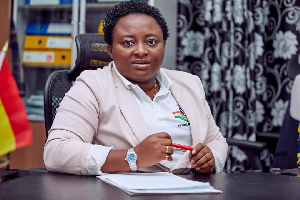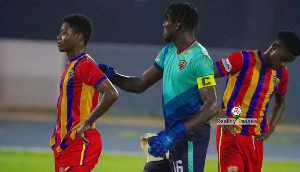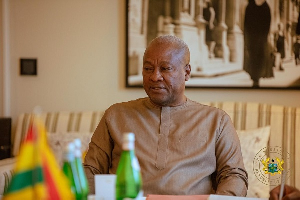By Edem Adotey, Institute of African Studies Legon
“A country that does not celebrate its heroes is not worth dying for.” It is in this vein that one calls for a more sober interrogation of our history. In fact, it is high time we examined the narrow perspective of the “founding” of Ghana and who the founder/founders was/were.
This has been necessitated by the continuous relegation of other individuals and groups of people who were instrumental in the creation and independence of our country. More often than not credit for the “founding” of this country has been given to a group, “Big Six” (Dr. Joseph Boakye Danquah, Dr. Ebenezer Ako Adjei, Emmanuel Odarkwei Obetsebi- Lamptey, Dr. Kwame Nkrumah, Edward Akuffo Addo and William Ofori Atta) or an individual, Kwame Nkrumah. This is evident in the maiden State of the Nation address delivered the President, His Excellency John Evans Atta Mills on Thursday, February 19, 2009 in which he said, “we intend to honour Dr. Nkrumah’s memory with a national holiday to be known as Founder’s Day” and the images of the “Big Six” on our currencies. First, it is important to recognize two salient points; one, the “founding” as in creation of the nation-state Ghana was largely a British colonial creation. Two, “founding” as is in the regaining of independence from the British imperialist was a process that spanned time and space and transcended the so-called founder(s) of the country.
The region of modern Ghana has been inhabited from at least 2000 BC. Archaeological excavations with the help of carbon dating show the lifestyles of hunter-gatherers who occupied rocks, caves, and open fields in the highlands of Kwahu, Banda, Bawku, Gambaga, nd Kpone.
The excavated remains – i.e. implements: stone axes, hoes, harpoons; domestic animals: goats, sheep and guinea fowl; crops such as cowpeas; homes built of stones and ornamented clay vessels – of the “Nyame Akuma” people or what is referred as the Kintampo Complex found in Christian village in Accra, Kwame Nkrumah University of Science and Technology (KNUST) campus, Kintampo, Begho amongst others show the pre- history of pioneer village builders and farmers and artists of the period 2000 BC.
The level of development of the people of the region of modern Ghana as at that time, apart from their domestication of wild plants and animals could be found in their sense of aesthetics as displayed on their ornamented vessels. However, the nation-state called Ghana (Gold Coast) was “founded” by the British imperialists in phases. It began on 24 July 1874, when the British issued a Proclamation by 2 which they established the Gold Coast Colony and Protectorate. These included present- day Western, Central, Greater Accra, Eastern and parts of the Volta Region.
In 1902, the Imperial Order-in-Council annexing Asante and Gold Coast Order-in-Council passed on 26 September 1901 annexing the Northern Territories as a British Protectorates came into force. These areas included present-day Ashanti and Brong Ahafo regions for Asante and Northern, Upper East and Upper West Regions for the Northern Territories.
It is important to note that not all areas in the region of modern Ghana were covered under these proclamations. Other areas were brought under British jurisdiction through treaties concluded with several rulers and the role of the Fanti surveyor George Ekem Ferguson in this regard particularly in the Northern Territories is worth mentioning. The last to be added was trans-Volta Togoland (parts of present-day Volta Region). It was part of the German protectorate of Togoland seized by Britain and France in 1916 during World War I and was divided between the two. British Togoland was formally transferred by the League of Nations to the United Kingdom on July 20, 1922 which ruled it as part of its Gold Coast colony as Trans-Volta Togoland with its capital at Ho. After World War II it became a UN trust territory still under UK. In a plebiscite held on May 9, 1956 on the eve of the Gold Coast’s independence, 58% voted in favour of incorporation into the Gold Coast. It officially became part of the Gold Coast on December 13, 1956. With regard to the attainment of independence, it is must again be re-emphasised that the people of the Gold Coast (Ghana) did not gain their independence as is often stated. Rather they REGAINED their independence which they had lost to the British imperialists following the establishment of British hegemony over the people in the nineteenth and twentieth centuries. And this regaining of independence was a process not an event; a process which predated the birth of these so-called founder(s). The people of the Gold Coast defended their sovereignty right from the imposition of colonial rule and throughout colonial administration which finally culminated in the overthrow of colonial rule.
Kwame Nkrumah or the “Big Six” was/were neither the originators of nationalist thought nor was/were the only one/ones that fought for independence or mobilized people in the struggle for independence. The regaining of independence was the cumulative effort of people from all walks of life across time and space and the following examples might suffice to buttress this fundamental point.
In August 1846, the people of Tantum assaulted a police man sent to arrest their chief for ignoring summons from Maclean’s court and in 1855 there was an attack on Christiansborg Castle by the people of Accra, Krobo, Akuapem and Akyem in protest against poll tax after British bombardment of La, Osu and Teshie. Traditional leaders like Nana Aggrey of Cape Coast resisted the usurpation of their authority. In 1866, he wrote to Gov. Conran, “The time has come for me to record a solemn protest against the perpetual annoyances and insults that you persistently continue to practice on me in my capacity as legally constituted King of Cape Coast ... However much you wish to have me and my people under martial law, you will never have that pleasure .... it is impossible for me to endure your tyranny, annoyances and abuses any longer nor will I be subject to the dissention that you are daily endeavouring to create amongst my chiefs and elders” This resulted in his deportation to Sierra Leone in 1866. Women whose role in the independence struggle is often relegated to that of cheerleaders were at the forefront of the struggle. There is of course the famous Yaa Asantewaa War (1900-01) led by the redoubtable Yaa Asantewaa who led the Asante against British imperialism. There were also the likes of the Akua Asabeas and the Hannah Cudjoes in the post-World War II nationalist phase. Farmers under Kwame Ayew of Akuapem and a Tetteh Ansah of Manya Krobo too contributed their quota to the nationalist struggle. Ayew organised a number of farmers unions in Larteh and Dodowa and formed the Gold Coast Farmers Association around 1921 and successfully organised cocoa hold ups in 1920-21 and again 1930-31 in Akyem Abuakwa and in Akuapem. In 1937, Ayew again organised a successful cocoa hold up and a boycott all meant to break the monopoly of the Great Combines, Compagnie Francaise de l’Afrique Occidenatale (CFAO), Societe Commercial de l’Ouest Africain (SCOA).
Also instrumental in the nationalist struggle were the youth movements such as the asafo whose role bring to the fore the point that the decision to resist was not the exclusive prerogative of the “leaders”. Absolutely important is the recognition of the limited power of the “leaders”. Some chiefs were deposed for giving in to colonial demands. In fact, following the Saltpond conference, April 19-23, 1932 of the Joint Conference of the Provincial Councils the heads of the Asafo companies and the subchiefs of Akyem Abuakwa, showed their opposition to the proposed Native Administration Revenue Bill and the narrow elite which stood to benefit from it, by instigating the destoolment of all five of the wing chiefs.
In the same vein, the decision to opt for “self-government within the shortest possible time” or “self-government now” was not a top-down imposition by the leadership but a response to popular pressure within the country as expressed in acts such as the 1948 Gold Coast riots.
Although these educated elites deserve credit for fast-tracking the regaining our independence, the undue emphasis which has so far been placed on their role in the anti- colonial struggles denies several others – some of whom lost their lives – their due credit in the “founding” of Ghana.
A comprehensive history that duly recognizes the central contribution of all – across age, sex, class, occupation, etc – is essential in empowering the people; they together with their “leaders” have brought the country this far and would take it farther. As Nkrumah himself rightly noted “when all is said and done, it is the so-called little man, the bent-backed, exploited, malnourished, blood covered fighter for independence who decides. And he invariably decides for freedom”.
Opinions of Thursday, 17 September 2009
Columnist: Adotey, Edem


















